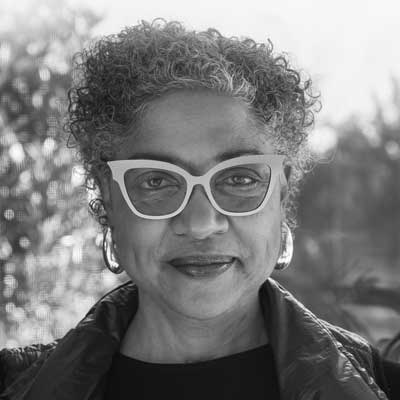Conference
Talk
Colette Gaiter:
Liberated Pages from Segregated Spaces
Connecting specific characteristics of Black liberation’s typographic language for a century and a half illuminates aesthetic, technical, and ideological threads that persist from abolition to #BlackLivesMatter.
Typographic aesthetics in Black publications and activist ephemera were always “designed for liberation.” Print aesthetics in these publications hybridized African and Western European cultural communication traditions because of enslavement’s brutal intercontinental collisions. Starting with the first U.S. Black abolitionist newspaper, “Freedom’s Journal”, which began publication in 1827, the Black press operated primarily in segregated spaces. Black and white newspapers separately and concurrently published political news and covered societal and cultural news of interest to their divergent readers. Numerous Black newspapers focused on securing African Americans’ rights, opportunities, and psychological liberation. Continuing far into the twentieth century, segregation required parallel publishing universes that made Black publication and its typography and design virtually invisible to white mainstream awareness and, subsequently, to print history.
This talk travels through a range of Black liberation publications, looking closely at “The Black Panther” newspaper. Although it was published for only 13 years, “The Black Panther”, which started in 1967, revolutionized Black liberation’s visuals and narratives. Emory Douglas, who art-directed, designed, and was the most prolific illustrator for the paper throughout its publication, helped Huey Newton and Bobby Seale create an explosive movement-building tool for liberating people of color throughout the world. Situated closer to alternative press aesthetics than traditional Black newspapers, “The Black Panther’s” illustrations, by Douglas and others, had the most prominent visual impact. The paper’s typography and layout received less attention but carried on and created important African American print culture traditions that resonate in later publications.
About Colette Gaiter

Colette Gaiter is a Professor in the Departments of Africana Studies and Art & Design at the University of Delaware. After working as a graphic designer in New York City, she became an educator, artist, and writer. Since the late 1980s she has taught visual communication, including graphic design and typography. Her visual work, exhibited internationally, ranges from digital prints and artist books to websites and interactive installations. Since 2005, she has written about former Black Panther artist Emory Douglas’s work, including his current international human rights artist activism. Her essays on his work appear in Black Panther: The Revolutionary Art of Emory Douglas (for which she wrote a new introduction to the 2014 edition), West of Center: Art and the Counterculture Experiment in America, 1965-1977, Art, Global Maoism, and the Chinese Cultural Revolution, and other publications. After numerous trips to Cuba, she has written about Afro-Cuban art, design, and culture, especially relating to issues of race.
Her online 2021 talk Strikethrough: Typography Messages of Protest for Civil Rights for the BIPOC Design History course evolved from research on typographic protest in the 1960s. That exploration continues in upcoming book essays on 20th century typographic liberation. The 2022 book The Black Experience in Design includes her essay on inclusive visual literacy. In a catalog essay for the Norman Rockwell Museum’s Imprinted: Illustrating Race exhibition, she explains how the 1960s and 70s Black Panther newspaper’s primary illustrator, led by Emory Douglas, uplifted Black communities by visually imagining real change.















![Black [Foundry]](https://2022.typographics.com/images/uploads/sponsors/Black_Foundry-logo.svg)









































